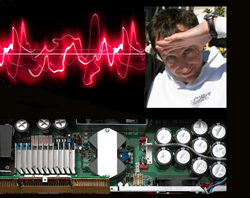
IN A CIRCLE
One of the quandaries faced by sound vendor companies is determining where to place system processors in the signal chain. Putting them in the front-of-house racks necessitates the use of lots of drive lines as well as long wires carrying post-limiter, post-crossover signals to the amps.
Alternately, the processors can reside in the amp racks, but this inevitably limits versatility due to a discrepancy between processor outputs and amp channels, unless there’s one processor output per amp channel.
A one-to-one processor output-to-amp ratio means that monitor amp racks and main PA amp racks can be identical and any amp rack can go anywhere.
But heck, if that’s the optimum, giving us maximum control and versatility, then why not put the processor in the amp and not waste the rack spaces? (And now we’ve come full circle!)
In my opinion, the inspiration will be fueled by the demand for worldwide sonic consistency, just as we see with almost every successful franchise, be it Starbucks, McDonalds or whatever.
Humans have a strong desire for familiarity, to know what to expect, and further, to be able to rely upon those expectations.
With manufacturer-specific smart amps (and also increasingly, powered/processed loudspeaker systems), there’s an opportunity for a fundamental shift in exactly who really has control of the starting-point sound of a PA system.
You might say that loudspeaker manufacturers are gaining more complete control over the amplifiers and processors used with their systems, while sound engineers that desire a certain system type will be able to steer clear of non-factory approved power and processing settings as well as benefit from lock-out features that prevent unqualified users from fiddling with settings.
